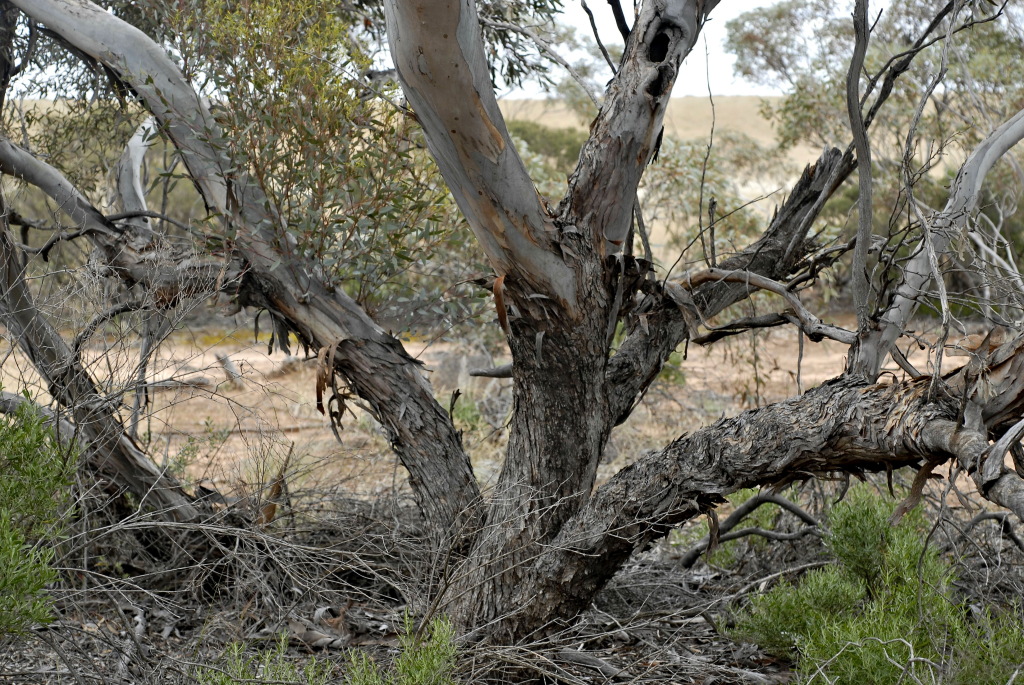Eucalyptus porosa
F.Muell. ex Miq. Black Mallee-boxSmall tree branching low, to 12 m tall, or mallee; bark rough over trunk and large branches or over most of stems, box-type. Juvenile leaves petiolate, opposite for few pairs then alternate, elliptic to ovate, to 6 cm long, 2 cm wide, green; adult leaves petiolate, alternate, lanceolate, often slightly crenulate, 6–13 cm long, 1–2 cm wide, concolorous, glossy, green; intramarginal vein remote from edge; reticulation moderate to dense, sometimes obscured by numerous oil glands. Inflorescences axillary, unbranched; peduncles to 1 cm long, 7-flowered; buds pedicellate, clavate to ovoid, to 0.7 cm long, 0.4 cm diam., no scar; operculum conical or hemispherical; stamens inflexed or irregularly flexed; anthers adnate, globoid. Fruit pedicellate, barrel-shaped, to 0.7 cm long, 0.6 cm diam.; staminal ring falling intact; disc descending; valves 4 or 5, below rim; seed brown, irregularly ovoid and slightly flattened, surface shallowly reticulate, hilum ventral. Flowers May–Nov.
LoM, MuM, Wim, VRiv, RobP, Gold, CVU, GGr, DunT. Also SA, NSW. In Victoria restricted to the north-west, north from Wyperfeld National Park, where it occurs on heavier loam soils of mallee areas.
Eucalyptus porosa expresses some link with E. leucoxylon and E. melliodora in the fruiting characters. Populations in the area to the west of Wycheproof are doubtfully of this taxon.
Brooker, M.I.H.; Slee, A.V. (1996). Eucalyptus. In: Walsh, N.G.; Entwisle, T.J., Flora of Victoria Vol. 3, Dicotyledons Winteraceae to Myrtaceae, pp. 946–1009. Inkata Press, Melbourne.
 Spinning
Spinning


